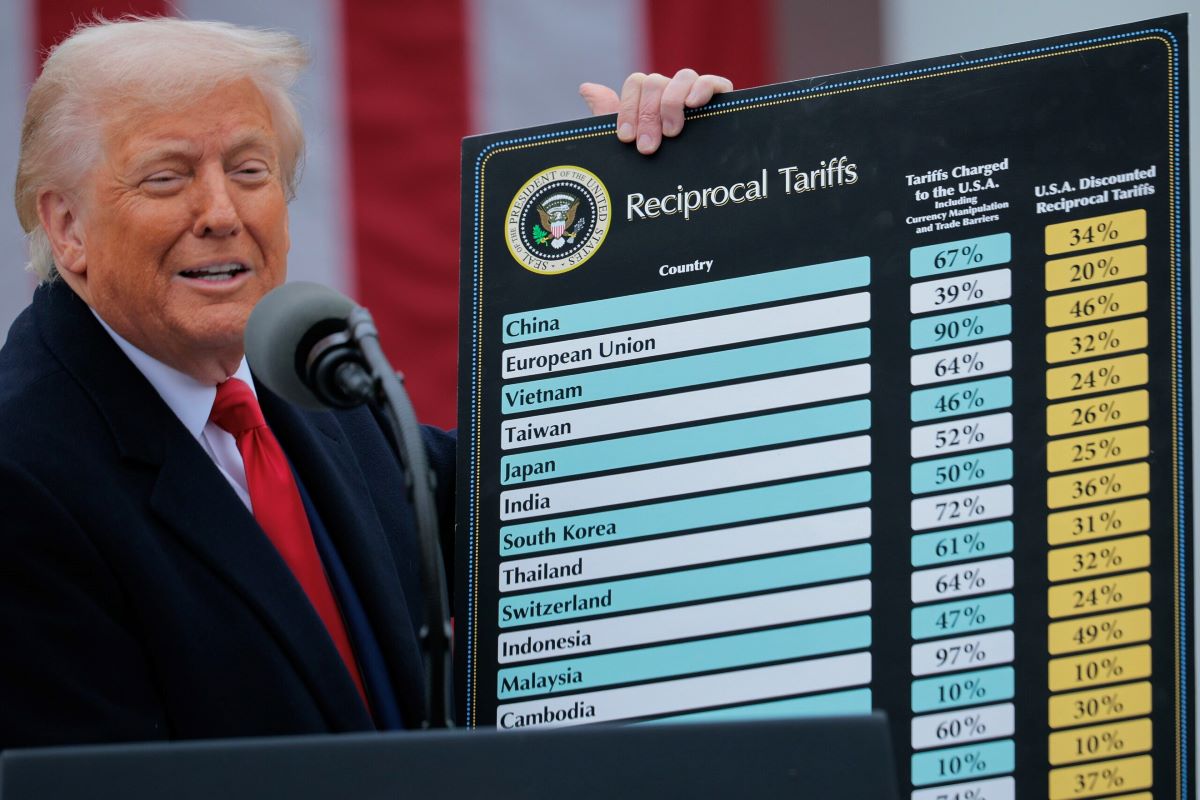Trump’s Auto Tariffs Stoke Trade Tensions and Market Caution Ahead of “Liberation Day”
President Donald Trump’s surprise Wednesday announcement of sweeping new tariffs on imported vehicles and auto parts has reignited trade tensions globally and injected a new dose of uncertainty into markets just days before the April 2 “Liberation Day” rollout. The executive order imposes a 25% tariff on all cars and auto components not manufactured in the United States, with enforcement beginning April 3. However, key carve-outs—particularly for parts falling under the USMCA trade deal—are adding nuance and confusion to an already combustible issue.
Ask Aime: What is the expected impact of President Trump's new tariffs on the auto industry and the broader U.S. economy?
The White House clarified that while all imported vehicles will be taxed, auto parts sourced from Canada and Mexico under the USMCA will remain exempt until the Commerce Department finalizes a process for evaluating their non-U.S. content. This provides temporary relief to North American supply chains, but uncertainty over future enforcement looms large. Trump positioned the tariffs as both punitive and transformational: designed to bring production back to the U.S. and to counter what he called the hollowing out of American industry. “If you build your car in the U.S., there’s no tariff,” he declared.
U.S. markets opened with a modest uptick Thursday morning, suggesting a partial pricing-in of the announcement or possibly a case of tariff fatigue. The S&P 500 held relatively steady, but the reaction was far sharper in the auto space and overseas. general motors fell over 7% in after-hours trading Wednesday, with Ford off nearly 5% and stellantis down 4%. European and Asian automakers were also hit: toyota, honda, Nissan, and Hyundai all dropped between 2% and 4% in Thursday’s Asia session. Germany’s car industry was particularly vocal, calling the move a “fatal signal” for rules-based trade and warning of serious damage to transatlantic economic ties.
European auto stocks followed suit, with Stellantis, Porsche, and Valeo each dropping more than 4% during the early London session. German officials, including Economy Minister Robert Habeck, urged the EU to respond forcefully and not “back down in the face of the U.S.” Automakers like BMW and Volvo struck a more cautious tone, reiterating their commitments to U.S. operations but withholding comment pending further clarity. The ambiguity around how and when the tariffs will be fully enforced—especially for USMCA-covered components—has left companies scrambling for answers.
The FX market mirrored the uncertainty, though reactions were muted compared to past tariff flareups. The euro dipped to a three-week low against the dollar before recovering slightly, while the dollar index slid 0.2% as investors shifted toward defensive positioning. Analysts noted that the relatively subdued response suggests markets may be pricing in the possibility that Trump’s broader April 2 tariffs—originally expected to be aggressive—could be less severe. Trump himself hinted as much, describing them as “conservative” and “lenient” in comments on Thursday. Still, the road between now and Liberation Day is paved with unknowns.
The tariff rollout arrives at a sensitive time for the auto sector, which is already navigating an expensive shift toward electric vehicles, weak demand from China, and ongoing supply chain instability. Industry groups like Autos Drive America warned that the new tariffs will drive up costs and reduce consumer choice. According to analysts, some vehicle prices could rise by $4,000 to $12,000 depending on their sourcing structure, with most of the burden falling on consumers. Meanwhile, U.S. automakers face rising input costs from prior rounds of steel and aluminum tariffs, exacerbating the challenge.
Market fatigue around tariffs is palpable—Wednesday’s after-hours moves in GM, Ford, and Stellantis notwithstanding—but it’s premature to interpret the broader market's muted response as complacency. Investors are in wait-and-see mode until the full scope of Trump’s April 2 tariff package becomes clear. With Trump also floating ideas like tax-deductible auto loan interest for American-made cars and taking swipes at wind energy mid-speech, the policy agenda remains fluid. Until then, sentiment-driven trading and elevated volatility are likely to dominate.
The April 2 “Liberation Day” is shaping up less like a moment of clarity and more like the next chapter in a long, winding trade story. For now, investors, automakers, and global partners are bracing for impact—with fingers crossed that the rhetoric doesn’t outpace the rulemaking.




